I’ve talked a ton about sunscreen over the years, but I’ve found that on every sunscreen post I get asked questions that I’ve answered before, and I think it’s because I’ve gotten a lot of new followers (hi, welcome and thank you!).
So I thought I’d do a post where I try to cover every sunscreen question that’s relevant to wearing sunscreen – which I realised, 4500 words into the script, is a very lofty goal. And I’m sure the moment I’ll think of three more questions the moment this goes live.
Since I’ve done so much in-depth content on sunscreens (blog posts, Instagram posts, videos and even an eBook with a sunscreen chapter), I’ll be summarising a lot of things – I’ll put links to the more detailed explanations as well.
Here’s the video, keep scrolling for the text version.
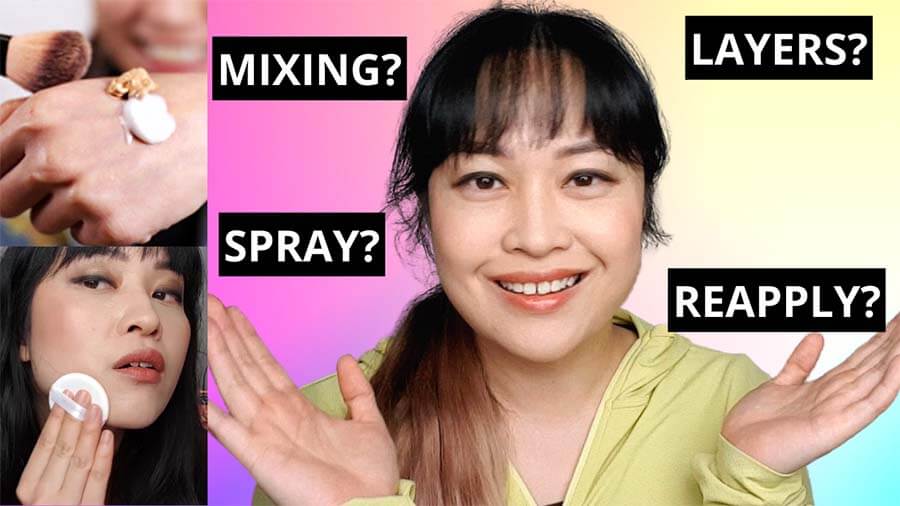
Questions covered:
- Do I need to wear sunscreen?
- What should I look for in a sunscreen?
- How much sunscreen do I apply?
- How do I apply sunscreen?
- How do I apply sunscreen with skincare and makeup?
- How can you stop sunscreen from balling up?
- How do I look less shiny with sunscreen on?
- Can I use foundation/powder/moisturiser/body sunscreen/clothing/hats instead of sunscreen?
- Can I mix sunscreen with foundation/moisturiser/another sunscreen?
- Can I make my own DIY sunscreen?
- Can I use expired sunscreen?
- Do I need to reapply sunscreen?
- How do I reapply sunscreen? Over makeup?
- Can I transfer sunscreen into another container?
- How do I deal with eye sting?
- Do I need to wear sunscreen indoors?
- Sunscreen Mythbusting Speedrun: hormonal disruption, nanoparticles, chemical vs physical, heat and melasma, reef-safe, benzene
Do I need to wear sunscreen?
I’m not your mum, you don’t need to do anything. However, the official Australian guidelines are:
- When the UV index is 3 or above in the middle of the day, you should use sun protection if you go outside for more than a few minutes. Even with sun protection, you’ll still probably produce enough vitamin D.
- When the UV index is below 3, sun protection is not recommended, and people should go outdoors in the middle of the day with some skin uncovered on most days.
These are a collaboration between experts from dermatology as well as from endocrinology, bone health and cancer. The World Health Organisation has similar guidelines as well. They’re meant to balance the health risks and benefits of sun exposure – so skin cancer vs the benefits, which is mostly vitamin D production.
Related post: Sun Protection and Vitamin D Deficiency
Now, these guidelines are just for skin cancer risk, so wearing sunscreen when the UV index is 3 or over is sort of the bare minimum. And the evidence points towards sunscreen not making much of a difference when it comes to vitamin D production, because all the little bits of your body that don’t get covered in enough sunscreen will make vitamin D when you’re in the sun anyway.
If you’re trying to improve your skin and deal with skin concerns like acne, uneven pigment, premature aging (fine lines and wrinkles) – which I’m guessing you probably are, since you’re here – then you probably should wear sunscreen on your face every day if you’re going outside.
The sun’s UV is the biggest preventable cause of skin aging and pigmentation. Prevention is much easier and more effective than trying to undo the damage later, and it’s usually cheaper as well – especially when it comes to deeper damage that you’ll need procedures to tackle, and not just skincare.
If you’re not wearing sunscreen, it means your skincare products have to work harder to get results. It’s like they’re swimming upstream against the current. So if you block out a bunch of UV – stop some of the current, in this analogy – your products will be able to work better.
There’s actually a study that found that skin texture, clarity and pigmentation improved with just wearing sunscreen daily, so your skin has the ability to repair itself if you cut down the amount of UV smashing into it.
Sunscreen is especially important if you use skincare products with alpha hydroxy acids like glycolic and lactic acids. These can make your skin more sensitive to UV, so if you’re not wearing sunscreen as well, your anti-aging skincare can actually make your skin age faster, which is just rude.
Related post: Do I need extra sunscreen when using chemical exfoliants?
What should I look for in a sunscreen?
Basically all it comes down to is:
- Is it protective enough for what you’re doing?
- Is it comfortable and budget-friendly enough that you’ll wear enough of it?
Let’s start with protection.
SPF
The most important thing is SPF. SPF tells you how well the sunscreen protects against burning, which is mostly to do with shorter wavelengths of UV called UVB. These are also the most damaging rays of UV – as well as burning, they cause skin cancer and premature skin aging.
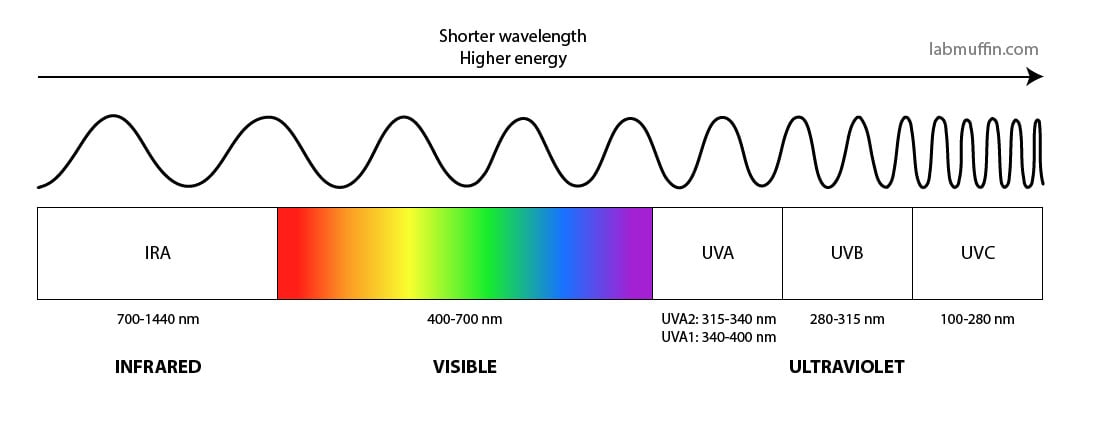
Related post: What Does SPF Mean? The Science of Sunscreen
Higher SPF is better, the protection you get is proportional to the SPF number. That’s why the SPF ratings were designed the way they are, the whole SPF 50 is only 1% better than SPF 30 thing is a myth.
Related post: Video: What Does SPF Mean? Is High SPF Sunscreen Better?
For most people, SPF 30 is enough for an everyday sunscreen, but you might want higher protection if you’re getting a lot of sun, or you just want higher protection. The downside of higher SPF is that the formulas can be thicker and less nice to wear, but this has been improving a lot in the last 5 years.
UVA protection
UVA protection is also important. UVA refers to the longer, lower energy wavelengths of UV that cause less burning, but are still linked to skin aging, cancers and increased pigment production.
Related post: Why you should protect your skin from UVA (and how) (with video)
UVA protection is a bit trickier than SPF, because there isn’t really a universally agreed-upon way of measuring UVA protection, and some countries (like Australia) actually don’t let brands show more detailed UVA protection numbers.
There are a lot of different labels used in different places – basically you want to go for at least “broad spectrum”, or as high as possible for PPD, PA or Boots Star Rating. If you care a lot about hyperpigmentation or premature aging, you might want to look for higher UVA protection.
Water Resistance
Water resistance is the final special sunscreen label that’s regulated. It tells you how much SPF protection is left after sitting in water for a particular amount of time.
In general, more water resistant sunscreens are also more resistant to sweat, sand, rubbing, and movement. So it’s a good idea to use water resistant sunscreen if you’re going into the water (obviously), or just moving around a lot while getting sun exposure.
Water resistance is also a bit tricky because different regions use different rules – Australia and the US are strictest with this.
Related post: Purito Sunscreen and All About SPF Testing (with video)
Tinted sunscreen (or any tinted product, really)
If you have darker skin (Fitzpatrick VI and above) and you’re worried about pigmentation, you might want to use a tinted sunscreen to protect against visible light from the sun.
Physical sunscreens without tint aren’t very good for this, and tinted chemical sunscreens work about as well as tinted physical sunscreens – it’s really just about the tint. Tinted sunscreens aren’t really regulated for visible light protection so it’s hard to say which one is best. Foundation probably works great for this as well.
Related post: How to Protect Your Skin Against Blue Light: an Update (with video)
Enjoyment
Aside from protection, it’s really just personal preference, with things like texture, white cast, skin sensitivity and cost. You need a sunscreen that you enjoy enough to apply regularly, and that you can afford to apply regularly, because you do need to use quite a lot of sunscreen.
Texture is incredibly important and underrated, in my opinion – these days there are lots of really nicely textured sunscreens that give great protection, and can feel like primer or moisturiser. If a sunscreen has a texture you hate, it’s more likely to just sit on the shelf unused, and you’re less likely to apply enough of it.
There’s a lot of talk about chemical and physical sunscreens – they’re actually really similar and the things I’ve mentioned above are way more important.
Related post: Chemical vs Physical Sunscreens: The Science (with video)
My very general rule of thumb is:
- If your biggest problem with sunscreen is texture or white cast, I’d recommend trying a chemical sunscreen first.
- If your biggest problem is irritation, I’d recommend trying a physical sunscreen first.
There are also combination sunscreens which have a mix of filters. They tend to be somewhere in between the two for texture and white cast.
Different sunscreens for different purposes
I personally use a few different categories of sunscreen for different situations:
I have everyday sunscreens that are light and comfortable, sit really nicely under makeup and don’t clog my pores too much. For me, they have to be above SPF 30, have good UVA protection, and I prefer newer filters that are less irritating to my skin and eyes.
I have hardcore face sunscreens that I use for outdoor activities when I don’t really care how I look and sun protection is the priority. These are SPF 50+, broad spectrum and water resistant.
I also have hardcore sunscreens for my body for outdoor activities. These are also SPF 50+, broad spectrum and water resistant, but also relatively cheap so I’m not tempted to apply less to save money. Ideally these also work for my face, so I don’t have to mess around with two bottles when it’s time to reapply.
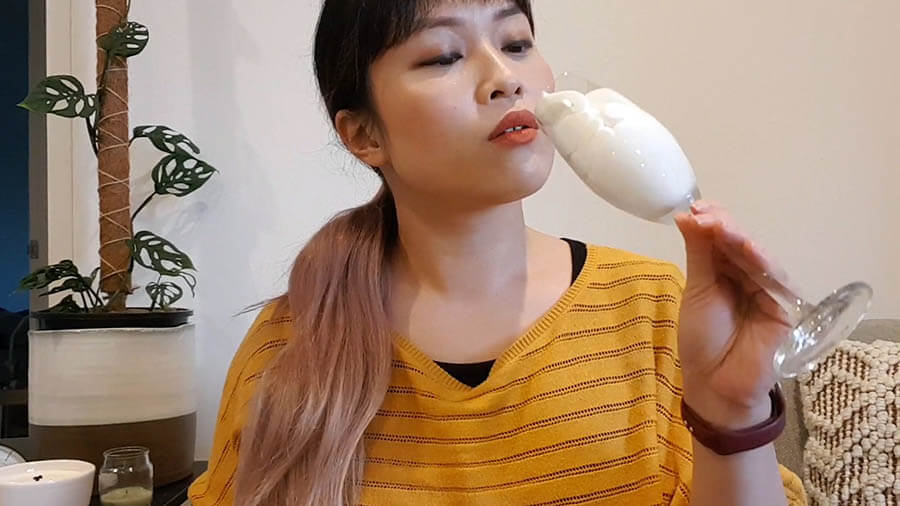
I have a post with my favourite sunscreens from last year, and I’ve added a few to the list since then – you can see them here.
Related post: My Favourite Sunscreens: 2021 Update (with video)
How much sunscreen do I apply?
To get the SPF on the label, you need to apply 2 mg per square centimetre. This works out to be a bit less than ¼ teaspoon for your face on its own, for most people.
Since it depends on your face size, the actual amount will be different for everyone. You can try to measure your face but it’s a bit of effort, so if in doubt aim for ¼ teaspoon.
Related post: How Much Sunscreen Do You Need For Your Face?
You might’ve heard of using 2 fingers of sunscreen. Obviously the amount depends a lot on how thick your lines are, so if you’re not sure, try scraping your lines into a ¼ teaspoon measure.
The reason you have to apply so much is that your skin is bumpy. If you don’t apply enough product, the sunscreen sits in the valleys on your skin, and the hills don’t get covered, or the layer is too thin.
“A little goes a long way” just doesn’t work with sunscreen. It’s like a paint that you’re wearing to hide your skin from the sun – if you don’t have enough paint on, parts of your skin will be exposed.
Related post: Do They Work? Colorescience SPF Powder, Skinnies “Pea-Sized Amount” (with video)
For the rest of your body, there are a lot of different recommendations for how much you need to apply, because different organisations estimate for different sized people. And chances are your proportions don’t match the ones they calculated these for. So when in doubt, apply more than you think you need.
My favourite version is the Cancer Council version because it’s the easiest to memorise – one teaspoon for each arm, leg, front of torso, back of torso and head/face/neck/ears.
How do I apply sunscreen?
Now for actually applying sunscreen! I think it’s really helpful to remember that sunscreen works best when it’s in a smooth, even, undisturbed layer.
So with that in mind, it probably makes the most sense to put sunscreen on your skin after skincare, regardless of what type of sunscreen it is – chemical sunscreens don’t need to absorb into bare skin to work.
The only exception is if it’s a special type of longwear sunscreen that’s meant to absorb into your skin. Those usually form a film in the top of your skin, so you probably don’t want tons of skincare under or over it – use your skincare a few hours earlier.
Related post: Do They Work? Evy 6-Hour Sunscreen, Dermablend Drops in SPF
Try to make sure the sunscreen is evenly spread over your skin – you can dab it on the different parts of your face at the start.
You don’t want to rub too much. There’s a study showing that rubbing reduces protection. So apply it evenly and then let it dry down, don’t rub it in the whole time.
You should also apply all sunscreens before you go outside. Sunscreens don’t need time to activate, but they do need time to settle down and not get wiped off onto your clothes, or get disturbed too much by you moving – it’s a lot like wet paint. The recommendation is usually 15 minutes, but it depends on the sunscreen. In one study the sunscreen they used only needed 8 minutes.
How do I apply sunscreen when I’m also wearing skincare and makeup?
Sunscreen makes the most sense in between skincare and makeup – so your skincare can sink into your skin and not mess up your sunscreen, and so your sunscreen doesn’t mess up your makeup.
Again, I think it’s really helpful to remember that sunscreen works best when it’s in a smooth, even, undisturbed layer.
There aren’t a lot of studies done on wearing sunscreen with other products, but based on studies for other situations, it seems like anything under the sunscreen, but especially on top of the sunscreen, can mess up your sunscreen layer.
So try to minimise the amount of skincare you use under the sunscreen (keep it to one or two products), and minimise the makeup you use on top of the sunscreen. Again, try to wait for the sunscreen layer to flatten down and stick to your skin before you apply your makeup – maybe 5 to 10 minutes – and try to apply your makeup as gently as possible.
It’s probably also best to use a sunscreen with a higher SPF than you need, so if it drops you’ll still be getting the SPF you want.
How can you stop sunscreen from balling up?
When sunscreen balls up, it’s usually
A. interacting with your skincare
B. drying too fast, or
C. you’re rubbing it too much
So you can try
A. applying it on bare skin
B. applying it on massively moisturised skin, or
C. patting it on gently
Unfortunately my skin is really oily, and sometimes my own face oil is actually what’s making it ball up, and people with dry skin have no problems with the same sunscreen.
So if you’ve tried the above and none of that worked, I would just try a different sunscreen. I’ve found so many that work well on my skin, even though I think my skin type is just very ball-prone.
How do I look less shiny with sunscreen on?
A lot of sunscreens are oily, because a lot of sunscreen actives are oils or dissolved in oils. So if you blot away the oil, you’re probably going to remove some sunscreen too.
The best way I’ve found to reduce shine without lowering the protection too much is to wait for the sunscreen to set, then gently pat translucent powder on top. I like starch-based powders for this. And I’d recommend looking for a less shiny sunscreen to buy next time.
Can I use [insert product] instead of sunscreen?
You might have some products that say “SPF” on them and you’re wondering if you can use them instead of sunscreen – the answer is usually no.
The main thing to remember is you need to apply about ¼ teaspoon on your face, and some products just don’t really work that way
Foundation with SPF: This is what you look like when you apply the proper amount.
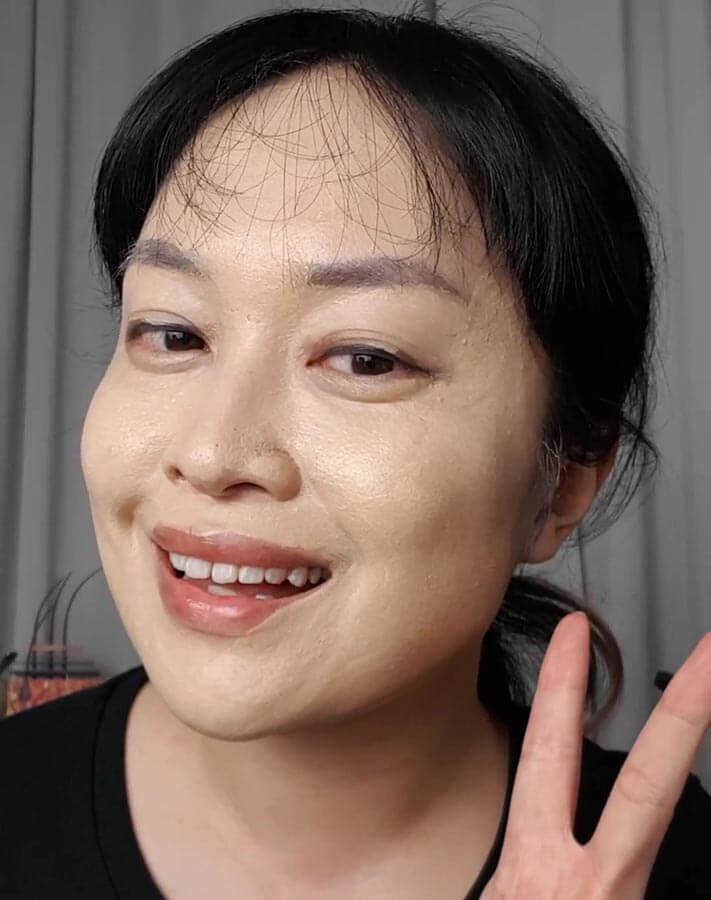
I usually apply about ⅛ of this. A very sheer foundation might potentially work, but I haven’t found one that doesn’t look like… this.
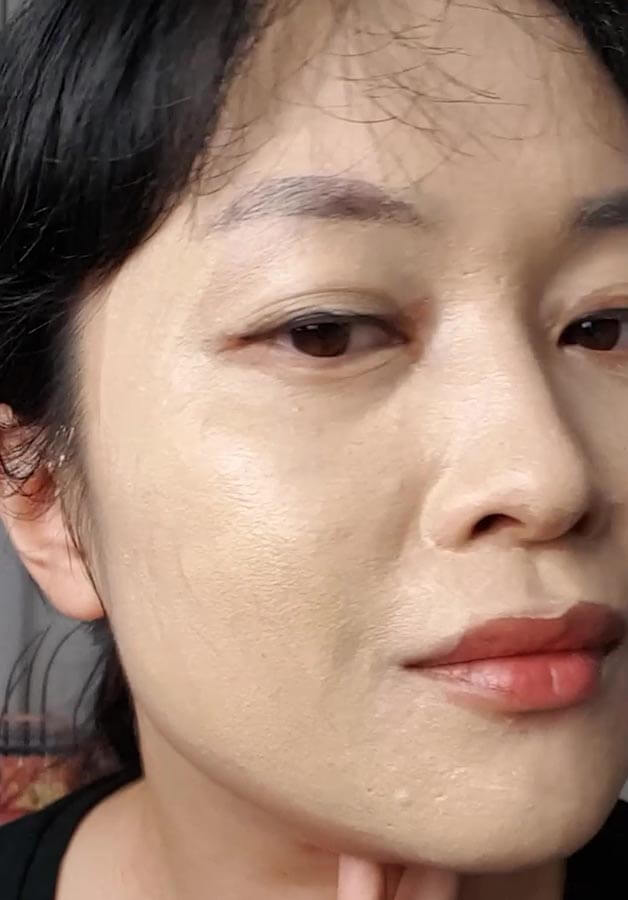
Powder with SPF: It just doesn’t stick to your skin enough. This is what 2 milligrams per centimetre looks like:
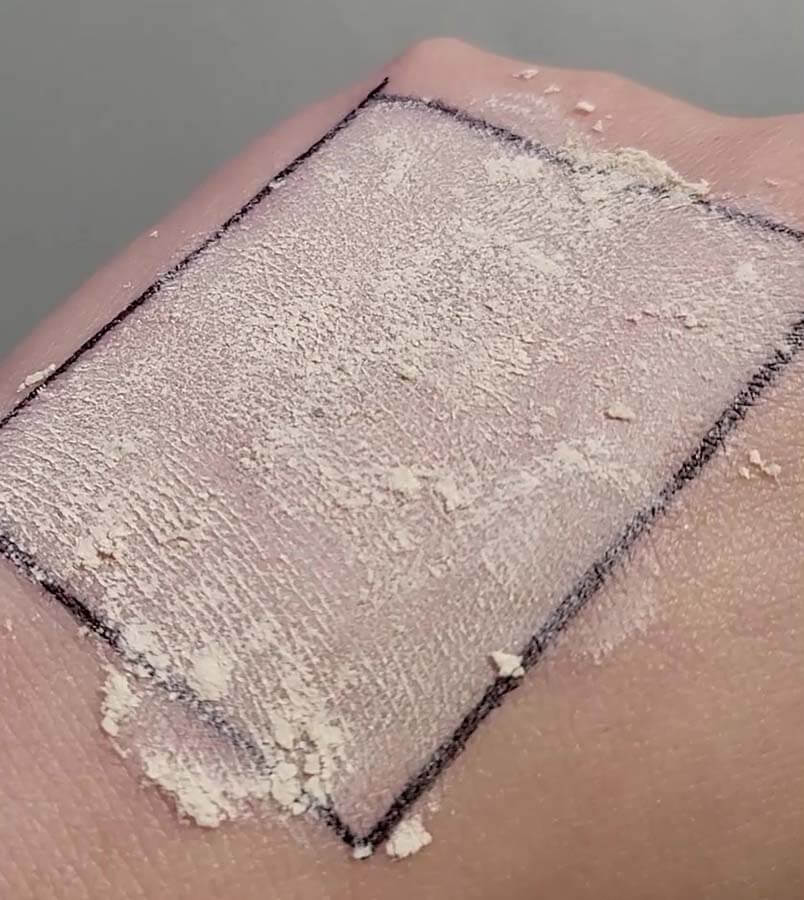
The powder that works best is probably the Colorescience powder, but even then their evidence doesn’t really convince me people can apply enough.
Related post: Do They Work? Colorescience SPF Powder, Skinnies “Pea-Sized Amount” (with video)
Things that do work:
- Moisturiser with SPF, if you can apply the right amount. This depends on the moisturiser texture, but in terms of formula, sunscreens are the same as moisturisers with SPF – they just chose a different name to put on the label.
- Body sunscreens. You can use body sunscreens on your face and face sunscreen on your body. The only minor issue is that body products tend to spread more easily and be a bit heavier, but if you’re OK with that then it’s fine.
- UV protective clothing is fantastic but obviously some skin is usually uncovered. Regular clothes can work too depending on the fabric
Related post: How to Choose UV Protective Clothing
Hats and umbrellas aren’t too bad. However, most of the UV you get actually gets bounced from the sky rather than coming directly from the sun, so the lower parts of your face get less protection.
Related post: Do Hats and Umbrellas Protect Well From the Sun? (with video)
So hats and umbrellas are good to use in conjunction with sunscreen to add extra layers of protection. Think of it like layers of Swiss cheese: layering enough types of imperfect protection will give pretty good protection overall.
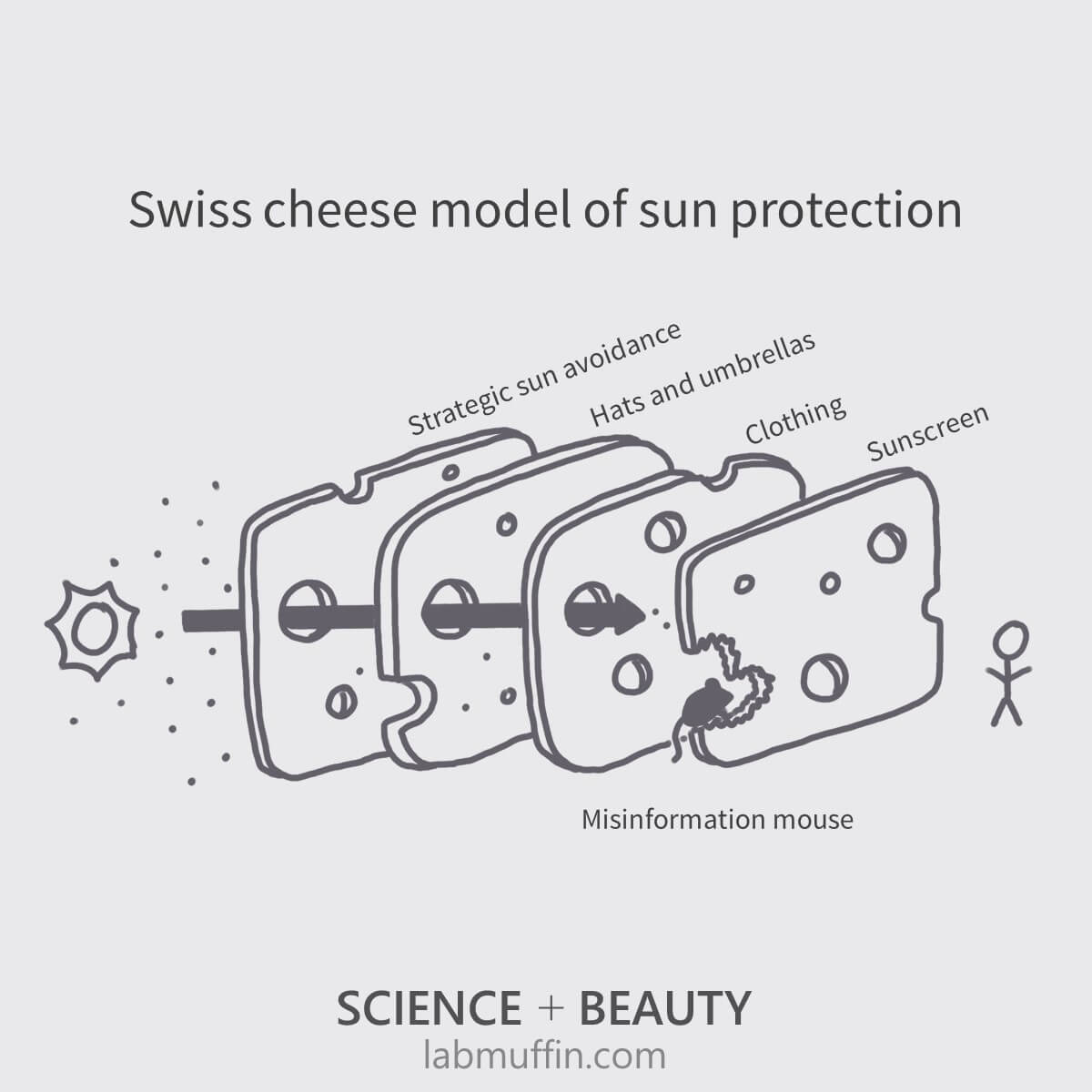
Can I mix sunscreen with foundation or moisturiser or another sunscreen?
It’s best not to mix sunscreen with foundation. Even though it can make it feel nicer, get rid of white cast, make your routine faster, it changes the way the sunscreen dries, which can mean you get holes in your protection.
Sunscreens are emulsions, like mayonnaise. If you have the wrong proportions, the emulsion can break and separate. If you’ve ever seen how foundation can bunch up if you apply it over the wrong product – the same thing can happen to sunscreen, and if it’s happening on a microscopic level you won’t be able to see it.
It’s best to just look for a sunscreen that already does what you want: if you don’t want white cast go for a chemical sunscreen, if you want a tint go for a tinted sunscreen.
Even worse are those “sunscreen drop” products you’re meant to mix into a moisturiser to make your own sunscreen. This means you have this holey film issue, plus you end up applying so little that you end up with really low SPF.
Related post: Product Rant: SPF Sunscreen Drops
Can I make my own DIY sunscreen?
So I mentioned the “sunscreen drop” products that you mix into other products end up with really low protection and unreliable film formation.
There’s also DIY sunscreen recipes online that involve mixing zinc oxide powder or diaper cream into oils or moisturisers to get 20% zinc oxide, which matches the concentration in a store-bought sunscreen.
This doesn’t work, because protection isn’t just about the percentage of zinc oxide, but also how it’s distributed in the sunscreen and how that applies on the skin.
Sunscreen uses special grades of zinc oxide with very small particles – this makes it absorb more UV, and it can cover a larger area.
Even with 20% of special zinc oxide, mixed with industrial equipment that can make the zinc oxide spread out in the product evenly, sunscreen formulators still get low SPFs sometimes because the base isn’t keeping the zinc oxide spread out when you apply it onto your skin. So if sunscreen formulators can’t do it consistently with all of this special stuff, the chance of you getting it right consistently at home with the wrong kind of zinc oxide is… not great.
Related post: Fact-check: Don’t Get Burnt by DIY Sunscreen
Can I use expired sunscreen?
There’s no guarantee the sunscreen will be working after the expiry date, so I’d recommend throwing expired sunscreen out.
Also don’t store sunscreen in the heat – it can break down and separate even before it expires, which means it won’t give you even protection. So don’t store it in your car glovebox, and if you’re at the beach or at the park try to keep it in the shade.
Related post: Don’t Make These Skincare Mistakes (with video)
Do I need to reapply sunscreen?
The reason you need to reapply sunscreen is that the sunscreen layer gets less even over time. Like foundation, the sunscreen layer clumps up over time because your skin is moving, and producing sweat and oil underneath. That means you’ll start getting tiny gaps in your sunscreen layer that UV can get through.
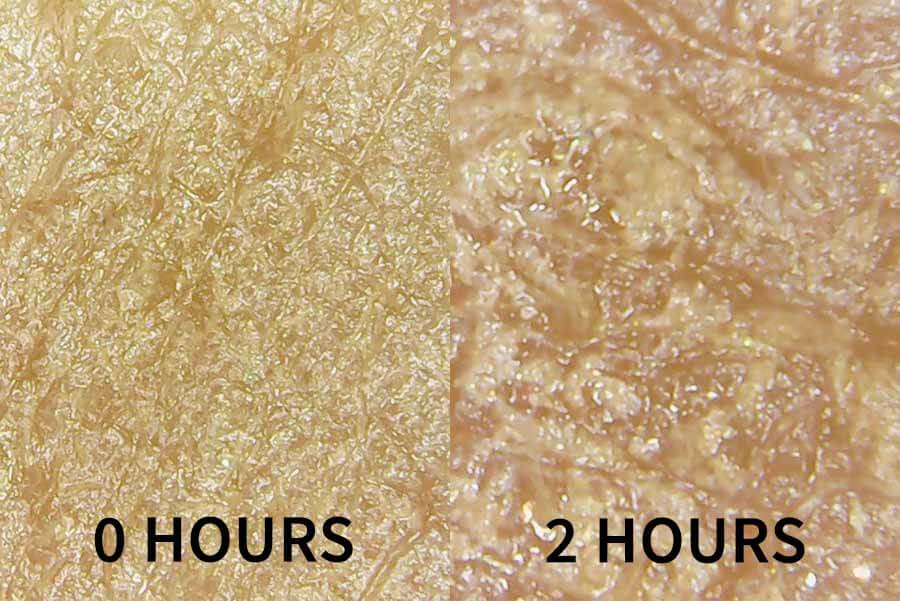
Some of the sunscreen also evaporates into the air and absorbs into your skin, so the sunscreen layer gets thinner and less effective.
Sunscreen can also get wiped off onto things, and if you get wet the sunscreen layer can also clump up, even if it’s water resistant.
So after you’ve had your sunscreen on for two hours, you’re probably not getting the labelled protection anymore, which is an issue if you’re about to get more sun exposure.
Related post: How to Reapply Sunscreen Over Makeup (with video)
Important note: this is 2 hours of the sunscreen being on your skin, not 2 hours of sun exposure. There’s this misconception that reapplying sunscreen is because the sunscreen ingredients stop working after absorbing too much sun. This is a myth – most sunscreens are pretty photostable now, so the ingredients almost always keep working for longer than the sunscreen film takes to clump up.
This 2 hours is also just a general rule. There’s evidence that some sunscreens can last a lot longer. And obviously if you’re sweating or moving around a lot and your sunscreen isn’t water-resistant, it probably won’t be staying put. If you aren’t moving around a lot, you probably still have pretty decent protection after a few hours, but no one’s tested the protection for a wide range of sunscreens so it’s hard to say. And unfortunately you can’t really rely on what you see with a UV camera – UV cameras don’t have high enough resolution to tell what’s going on. One study found that the UV photo looked exactly the same even with around 15% lower SPF.
Related post: Purito Sunscreen and All About SPF Testing (with video)
How do I reapply sunscreen over makeup?
I think reapplying sunscreen on your body is pretty straightforward… but how do you reapply sunscreen on your face? And how do you do it if you’re wearing makeup?
Related post: How to Reapply Sunscreen Over Makeup (with video)
Unfortunately there isn’t really a perfect way to get high protection while keeping your makeup intact. So I approach it depending on how much sun exposure I’m going to get afterwards:
Situation 1 is if I’m getting a lot of sun exposure (say, I’m going on a long beach walk in the afternoon). Then I keep my makeup simple, and just reapply the full amount of sunscreen like normal every two hours followed by the minimal makeup.
You don’t have to wash off your sunscreen, and can just reapply on top. But if there’s dirt on your face or it’s getting a bit messy, you can wipe it off before you reapply.
Situation 2 is if I’m getting some sun and I want to keep my makeup mostly intact (say it’s summer and I’m walking outside for 20 minutes after work). Then I reapply sunscreen on top of makeup right before I go out.
There are only really two options for this that I think give enough protection:
Lotion: The option I prefer is reapplying a light sunscreen over my makeup. I use a cushion puff, which is a method that Jude of Fifty Shades of Snail came up with around 2015. I love these because they’re so thin – they’re really portable, and they don’t absorb much sunscreen. (It is still good to use a bit more sunscreen than normal to make up for what ends up in the sponge.) There are sunscreen cushions from Asian brands as well that are designed for reapplying over makeup, but I find those too expensive, plus they usually have a white cast.
Spray: The other option that can give decent coverage is a spray. Sprays can get into the valleys of your skin, but the main issue is that sprays can be quite light in spots, so you need to make sure you apply enough layers, and let each layer dry before the next layer. You can spray your spray into a quarter teaspoon measure to work out how many sprays you need.
The other issue is that breathing in too much sunscreen probably isn’t very good for you. So if you use a spray make sure you hold your breath, and walk out of the cloud of spray before you breathe in again.
Also be careful if it’s windy because the spray won’t land on your face. I’d also avoid aerosol sunscreens – the SPF test is usually done before adding propellant, so you need to apply a lot more to get the labelled protection.
For reapplication, it’s always safest to go with a sunscreen that has similar active ingredients to what you’re already wearing. There’s a slight chance that sunscreen actives can react with each other and break down – if you aren’t mixing them around a lot it shouldn’t be a huge problem, but it’s safer to try to avoid that anyway.
Related post: Do zinc sunscreens stop working and go toxic after 2 hours?
Situation 3 is when I get minimal sun. For example, I’m going outside for five minutes and it’s mostly shady. In that case I don’t reapply – I rely on what I have on already, and try to stay in the shade.
You can also use layers of protection. Hats, shade, sunglasses, umbrellas are great if you don’t think your reapplication was enough, and also just generally when you’re getting a lot of sun.
Can I transfer sunscreen into another container?
I would really recommend avoiding that. A lot of sunscreen ingredients can react with or soak into some plastics. This means you can end up with less active ingredients in the sunscreen, and the sunscreen can dry in weird ways on your skin. Glass should be OK if it’s very clean and if you protect it from light.
Related post: Don’t Make These Skincare Mistakes (with video)
How do I deal with eye sting?
Some sunscreens sting your eyes, and annoyingly it seems to be different ingredients and sunscreens for different people. There are some sunscreens out there that don’t sting your eyes much so look at reviews for those.
If you’ve found the perfect sunscreen apart from eye sting, you can use a different sunscreen for around your eyes – I like to use a sunscreen stick because they tend to stay put for longer. Some people also find that setting with translucent powder helps, but that isn’t enough for me.
Do I need to wear sunscreen indoors?
For most people, probably not – you probably aren’t getting enough UV inside your house. Window glass blocks almost all the UVB, but UVA still comes through, and that can potentially cause premature aging and pigment. But the roof and the walls are probably blocking the vast majority of it, unless you have sunlight directly hitting your skin through a window, or if you’re right next to a big window and you can see lots of sky through it.
Related post: Should You Wear Sunscreen Indoors? The Science (with video)
Monitor and phone screens don’t produce enough damaging light to worry about unless you have a special condition (you would know if you had one). Fluorescent lights also don’t produce much UV if they’re properly shielded, maybe be careful if you have a bare bulb, particularly an old curly one.
Related post: Will Blue Light from Computers and Phones Damage Your Skin?
Sunscreen Mythbusting Speedrun
There are a ton of other myths about sunscreen that I haven’t covered, and I’m sure there’ll be even more to come, but here’s a list of myths that I’ve debunked before. Here is my attempt to speedrun the more common ones in 20 words or less each:
Chemical sunscreens are dangerous hormonal disruptors: Legal limits based on all relevant data in context, with large margin of safety; fearmongering sites show select studies only
Related post: More Sunscreens in Your Blood??! The New FDA Study
Nanoparticles are dangerous: Nanoparticles don’t penetrate beyond the stratum corneum with unbroken skin.
Related post: Video: All Your Sunscreen and Make-up Questions Answered
Chemical and physical sunscreens work differently: Both mostly work the same, only 5–10% UV is scattered by physical sunscreens (the rest is absorbed)
Related post: How Do Sunscreens Work? The Science (with video)
Physical sunscreens work better: How well sunscreen works depends on SPF and UVAPF; chemical sunscreens can get higher SPFs and UVAPFs
Related post: Chemical vs Physical Sunscreens: The Science (with video)
Heat from chemical sunscreens is bad for melasma: Chemical and physical sunscreens produce around the same amount of heat, and that amount is undetectable.
Related post: Do We Need to Worry About Heat From Sunscreens? (with video)
Sunscreens are killing coral reefs: Climate change, agricultural pollution, overfishing are killing reefs; way too little sunscreen in ocean to make a difference
Related post: Is Your Sunscreen Killing Coral Reefs? The Science (with Video)
Benzene levels in sunscreens are dangerous: Amounts in sunscreen are tiny, you get more from parking your car in a garage attached to your house
Related post: Will Benzene in Sunscreens Give You Cancer? (with video)
If I didn’t answer something in enough detail, I’ve probably covered it in another post – check out all my sunscreen posts here.
References
Sayre RM, Powell J, Rheins LA. Product application technique alters the sun protection factor. Photodermatol Photoimmunol Photomed. 1991;8(5):222-224.



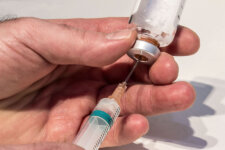


I LOVE that you have a list with your favorite sunscreens (complete with photos!). So many Asian sunscreens are recommended by name, but if you go on Amazon or something to find it, there are variations or formulation changes and it’s so hard to find what was recommended to you. The photos help a lot.
Also, I always thought that moisturizers with SPF in them were inferior to dedicated sunscreens. I’m back to the drawing board with more options to consider now . . . .
What are your thoughts on layering different types of products containing SPF? (So a moisturizer with SPF, with then a primer with SPF, makeup with SPF, powder with SPF . . . . etc.). Does that fall into your swiss cheese analogy? Or is it counterproductive to have too many products with SPF at a time?
I’m not Michelle, but IIRC, Michelle has mentioned in previous videos that using makeup products with SPF on top of sunscreen can help slightly with protection since it gets you closer to the 2mg/cm^2 amount of sunscreen required. I consider is a “nice to have” instead of a necessity.
Only potential issue is sometimes mismatched UV filters can affect each other, but that’s usually in really crappy “”natural”” branded products which use uncoated zinc oxide or don’t bother to encapsulate their UV filters. Hopefully not an issue for any legimate sunscreen company with good R&D.
I will bookmark this one to refer people to when these questions come up – because they inevitably do.
Thank you!
So appreciate this summary! It’s like a review for my brain lol
Hey Michelle. I’ve been using by this sunscreen for umpteen years; the product was recently reformulated due to a number of complaints relating to sensitivity to some of the ingredients. It doesn’t make any of tour “top” lists, but asking if it’s a decent 30% sunscreen.
PRODUCT: Ego QV Face Day Cream SPF 30 150g
INGREDIENTS
ACTIVES: Bemotrizinol 1.7%,
Diethylamino Hydroxybenzoyl Hexyl Benozate 2.7%, Titanium Dioxide 3.0%, Octyl Methoxycinnamate 5.0%
PRESERVATIVES:
Dichlorobenzyl Alcohol,
Phenoxyethanol and
Hydroxybenzoates.
Hi Michelle
Can you please do a review of Ultrasun and their claims of applying once daily?
Thanks
Kay